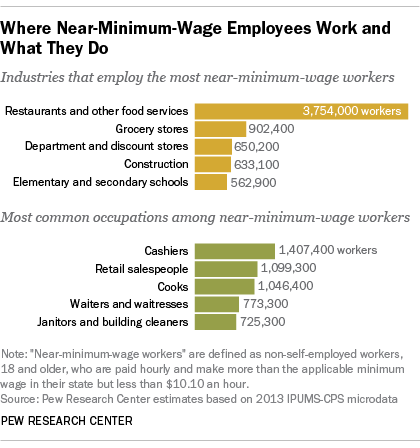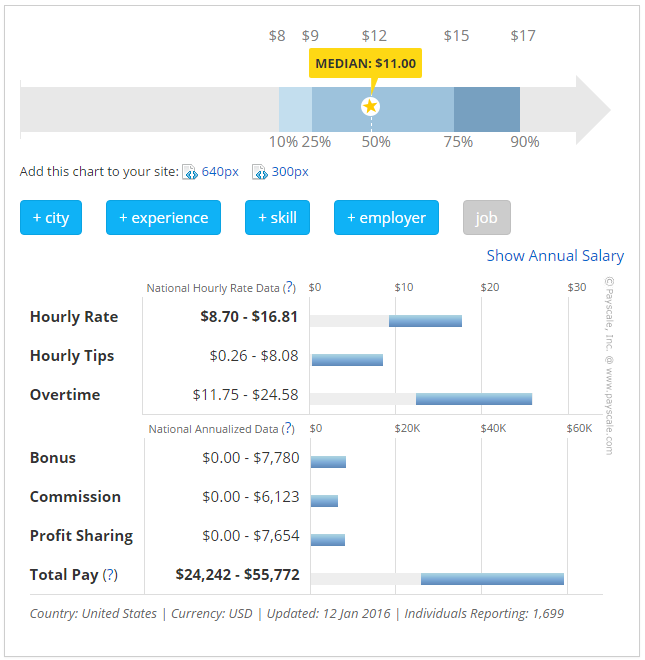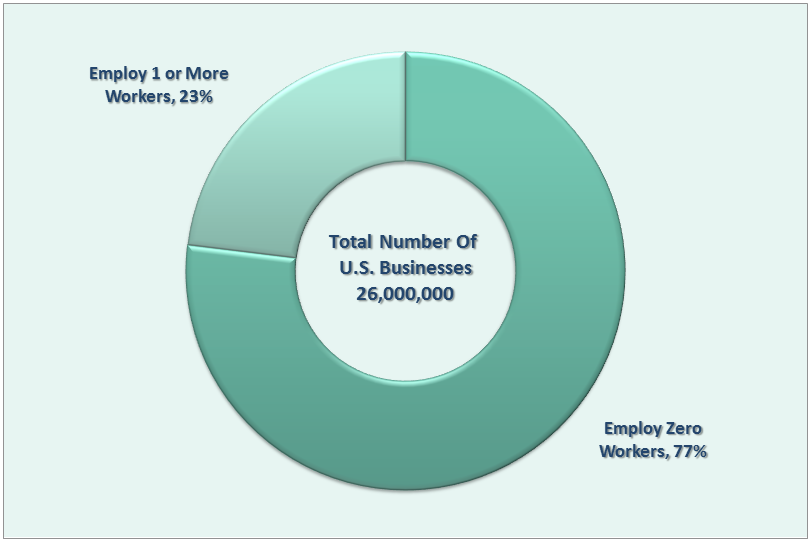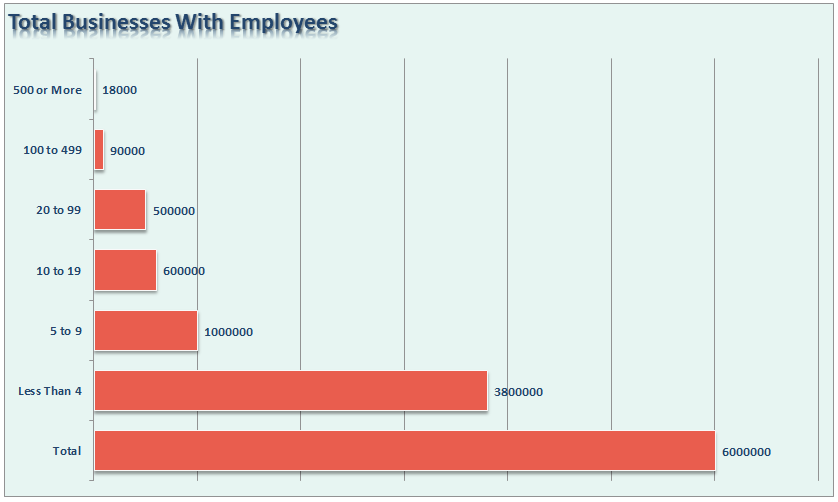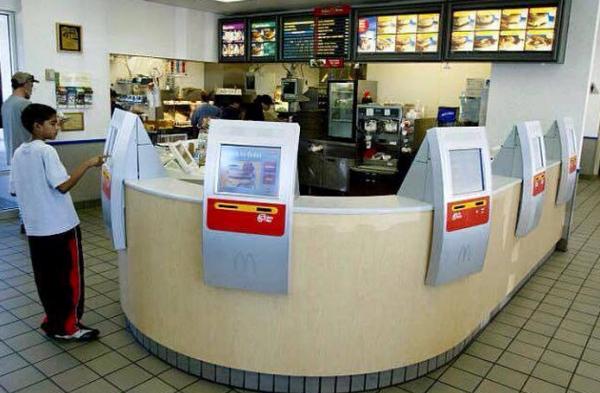What’s the big “hub-bub” over raising the minimum wage to $15/hr? After all, the last time the minimum wage was raised was in 2009. The argument for increasing the minimum is to create a “livable wage” for those working at that level.
Given the amount of table pounding that has ensued after the current administration proposed increasing the minimum wage, you would have assumed that a vast majority of American workers were trapped at this horrifically low level of income. Let’s take a look at some numbers.
According to the April 2015, BLS report:
“In 2014, 77.2 million workers age 16 and older in the United States were paid at hourly rates, representing 58.7 percent of all wage and salary workers. Among those paid by the hour, 1.3 million earned exactly the prevailing federal minimum wage of $7.25 per hour. About 1.7 million had wages below the federal minimum.
Together, these 3.0 million workers with wages at or below the federal minimum made up 3.9 percent of all hourly-paid workers.”
Of those 3 million workers, who were at or below the Federal minimum wage, 48.2% of that group were aged 16-24.
Furthermore, the percentage of hourly paid workers earning the prevailing federal minimum wage or less declined from 4.3% in 2013 to 3.9% in 2014 and remains well below the 13.4% in 1979.
Hmm…3 million workers at minimum wage with roughly half aged 16-24. Where would that group of individuals most likely be found?
Not surprisingly, they primarily are found in the fast food industry.
“So what? People working at restaurants need to make more money.”
Okay, let’s hike the minimum wage to $15/hr. That doesn’t sound like that big of a deal, right? Let’s do that math:
My son is just turning 16 in June and is going out to get his first job. He has no experience, no idea what “working” actually means, and it about to be the brunt of the cruel joke of Federal taxation when he sees his first paycheck. Let’s do the math of $15/hr assuming he works full-time this summer.
- $15/hr X 40 hours per week = $600/week
- $600/week x 4.3 weeks in a month = $2,580/month
- $2580/month x 12 months = $30,960/year.
Let that soak in for a minute. We are talking paying $30,000 per year to a 16-year old to flip burgers.
Governor Jerry Brown recently caved to Unions and passed legislation to hike the minimum wage in California to the magical level of $15. According to the Huffington Post, this will affect about 567,000 workers in Los Angeles. Here are those numbers (thanks to B. Eshelman for the math.)
- In 2015 Annual Salary $18,720 x 567,000 = $10,614,240,000
- In 2020 Annual Salary $31,200 x 567,000 = $17,690,400,000The overall total Gross for 2016 / 2017 / 2018 / 2019 / 2020 works out to $76,658,400,000 – 76.6 Billion dollars in wages.
An increase in wages of $76.6 billion in wages will be passed onto consumers in the form of higher costs of products.
However, here is the real reason that California, New York, and the current Administration are pushing for a higher minimum wage. If we only look at the increased portion of wages that will be paid under the new standard we find an increase of $23.5 Billion Dollars in Los Angeles alone which equates to:
- An Increase takes in of $764,678,880 California State Taxes.
- An Increase takes in of $342,014,400 Medicare Taxes.
- An Increase takes in of $1,462,406,400 Social Security Taxes.
- An Increase takes in of $3,423,971,250 Federal Taxes.
- Plus the employer pays equal amounts in taxes to what the employee pays.
Not a bad way to boost tax revenue when you extrapolate Los Angeles nationwide.
But there is also the inevitable unintended consequences of boosting the minimum wage.
The Trickle Up Effect:
According to Payscale, the median hourly wage for a restaurant manager is $11.00 an hour.
Therefore, what do you think happens when my son, who just got his first job with no experience, is making more than the manager of the restaurant? The owner will have to increase the managers salary. But wait. Now the manager is making more than the district manager which requires another pay hike. So forth, and so on.
Of course, none of this is a problem as long as you can pass on higher payroll, benefit and rising healthcare costs to the consumer. But with an economy stumbling along at 2%, this may be a problem, just as Oregon is finding out:
“Facing concerns from the right and the left that her minimum wage proposal was an obvious job killer in Oregon, Gov. Brown blinked on January 28 and has scaled back her proposal to only a $.50 raise per hour statewide July increase, from $9.25 to $9.75-per-hour.”
This move followed a recent report from the Manhattan Institute which concluded:
“By eliminating jobs and/or reducing employment growth, economists have long understood that adoption of a higher minimum wage can harm the very poor who are intended to be helped. Nonetheless, a political drumbeat of proposals—including from the White House—now calls for an increase in the $7.25 minimum wage to levels as high as $15 per hour.
But this groundbreaking paper by Douglas Holtz-Eakin, president of the American Action Forum and former director of the Congressional Budget Office, and Ben Gitis, director of labormarket policy at the American Action Forum, comes to a strikingly different conclusion: not only would overall employment growth be lower as a result of a higher minimum wage, but much of the increase in income that would result for those fortunate enough to have jobs would go to relatively higher-income households—not to those households in poverty in whose name the campaign for a higher minimum wage is being waged.”
This is really just common sense logic. If we look at the total number of businesses in the United States we find the following breakdown:
Out of a whopping 26 million registered businesses in the United States, only 23% actually have employees. The rest are “inactive” companies that have no sales, profits, customers or workers.
Let’s dig a little deeper.
Of the 6,000,000 businesses that actually employee people 63% have fewer than 4-employees. These are the “mom and pop” shops owned by people who aren’t building a business as much as they are building a life. Most of these businesses operate on very thin margins and there is little ability to absorb dramatically higher payroll costs.
The 5-99 employee businesses likewise are generally much more sensitive to changes in costs and customer demand and would also be adversely affected by higher costs without higher levels of aggregate demand.
Problems With Hiking The Minimum Wage
- Minimum wage jobs are “starter jobs.” These are the jobs where individuals learn how to work within a business environment, make mistakes, get fired, etc. without it impacting their long-term employment prospects. Down the road when applying for a real job, employers don’t care so much about your days “flipping burgers” or “waiting tables” as much as your education and current skill set.
- Minimum wage jobs are not meant to supply a “livable wage.” Most minimum wage jobs, as stated, are just a quick “test” position for an employee. Once they prove themselves capable and dependable, they tend to be quickly promoted up the employment ranks. This is why only 3-million jobs out of 160 million are at or below the minimum wage. If you have been working at a job for longer than a year at minimum wage, the problem is probably you.
- As an “anti-poverty” tool, it is a blunt instrument. Many minimum wage earners are second or third-job holders in households with other income. That could include a teenage summer employee whose parents both have jobs. Other minimum wage workers may include retirees with income from savings and Social Security who own their homes mortgage-free.
- Wages reflect the value employees add to final output. Given that businesses exist in a competitive environment, wages reflect the skills and market value of what an employee is capable of producing. If an employee’s production creates more income for the business his “worth” is higher and is reflected in his wages. If a firm underpays a skillful employee, another firm will recognize that talent and pay more to get it.
- Higher wages may hurt those it is supposed to help. First, when Seattle hiked their minimum wage, employees wanted less hours to remain on welfare. While a higher wage sounds good, after taxes it produced less income for low-income households by reducing their welfare benefits. Secondly, as stated above, the number of jobs that will likely be lost to automation will increase. A one-time cost to increase technological innovation in a restaurant is quickly repaid given a substantial increase in payroll costs.
Don’t misunderstand me. I am not bashing anyone that wants to hike the minimum wage. It doesn’t affect my business one bit as no one I employee makes minimum wage.
Should we raise the minimum wage from $7.25 an hour to say $8.00 an hour? Probably. The cost of living has risen since the 2009 wage hike and a $0.75 increase would likely be more palatable than a doubling.
Importantly, the unintended consequences of a minimum wage hike in a weak economic environment are not inconsequential. Furthermore, given that businesses are already fighting for profitability, hiking the minimum wage, given the subsequent “trickle up” effect, will lead to further increases in productivity and “off shoring” of jobs to reduce rising employment costs.
So much for bringing back those manufacturing jobs.
Lance Roberts
Lance Roberts is a Chief Portfolio Strategist/Economist for Clarity Financial. He is also the host of “The Lance Roberts Show” and Chief Editor of the “Real Investment Advice” website and author of “Real Investment Daily” blog and “Real Investment Report“. Follow Lance on Facebook, Twitter, and Linked-In

